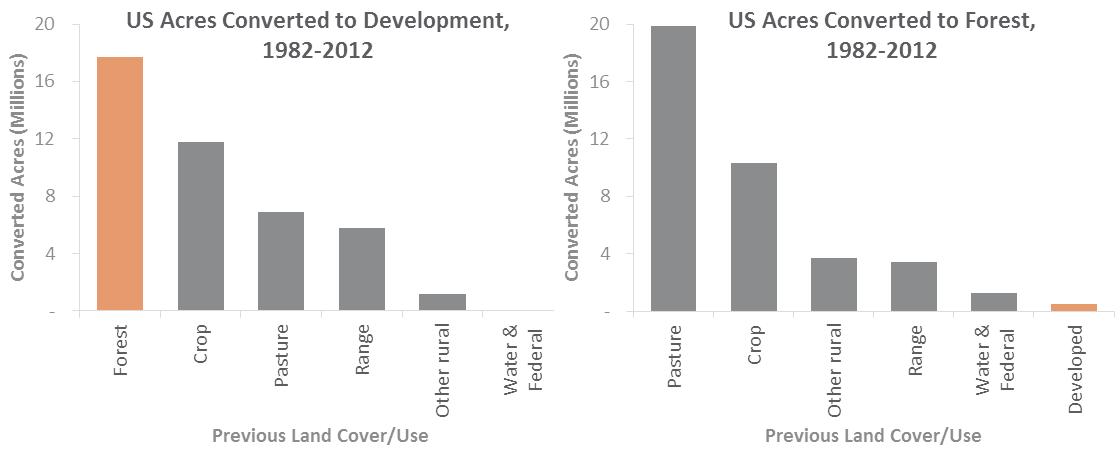2 min read
Increasing Urbanization Harms Forests and Rural Workers: The Evidence
John Greene
:
August 7, 2017

“Us guys, we bust our butts. It’s dangerous work doing what we do, but I love it out here. There’s nothing like it.” So stated Tony Gale, a veteran logger from rural New York, in an interview with Huffington Post. The digital media company recently published a comprehensive piece on the intersection between suburban development and rural communities, and Gale is representative of many in America’s rural workforce who are challenged by the changing dynamics brought about by urban sprawl.
The article, titled “The McMansionization of America’s Forests is Hurting Rural People” explores the myriad threats facing timberland in rural communities, including land use conversion, land fragmentation and changes in zoning laws.
It also discusses the non-profit work being done by The Conservation Fund, which has preserved nearly 500,000 acres of privately-owned working forests over the last 20 years via a process known as conservation easement. In this arrangement, the fund purchases land from investors then creates new land management terms that allow for sustainable logging and certain recreational activities. The Conservation Fund then sells the land to new owners who agree to maintain the easement’s terms of use, essentially establishing permanent working forested land.
The challenges facing working forests in New York are certainly not unique to the US Northeast. Forest2Market’s recent report documented the impact of land use change, especially development, on forests in the US South and the United States as a whole. Our report shows that of the 36 million acres of forestland that converted to another use between 1982 and 2012, almost half (17.7 million acres) converted to development, more than any other single land cover/use type (Figure 1). While forest land converted to other uses, other land use types also converted to forest, resulting in a 0.7 percent net increase in forest acres. However, of the 39 million acres of land that converted to forest, only 0.5 million acres, or 1.2 percent, were previously developed; most were previously pasture or cropland.

These data show that developed land uses, which expanded by 58.7 percent between 1982 and 2012, place undeniable pressure on forests. Further, once developed, land rarely ever reverts back to forests. Urbanization is the single biggest threat facing forests today. And while landowners harvest timber from working forests, they also regenerate that timber. Working forests, supported by accessible and healthy markets for timber, help keep forests forested.
Stay tuned to our blog for more analysis related to our recent report on working forests, urbanization, land use change and the future of America’s forests.
For more detailed information and further reading:

At a Glance (report highlights)




